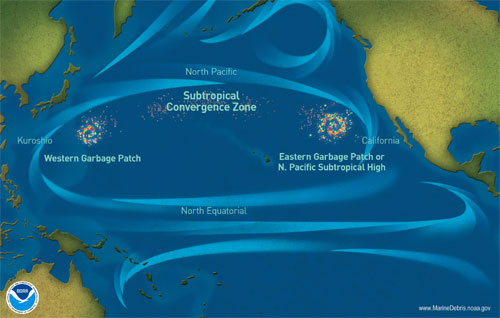To the editor: The discourse on worldwide plastic pollution is hard to avoid these days; everywhere you look, there’s another alarming story about Texas-sized garbage patches in the Pacific and pounds of plastic in the bellies of marine mammals and birds. It’s mind-boggling to think that every day about 22,000 tons of plastic waste escapes into the ocean from coastal nations. And, according to the Ellen MacArthur Foundation, by 2050 there will be more plastic in the ocean by weight than fish. Given the breadth and scope of the crisis, it’s about time it’s receiving the attention it deserves.
Thanks to social media and the smartphone camera, the problem has moved into the mainstream and enough people are witnessing secondhand how serious an issue this is. Did you see the video of the sea turtle with the plastic straw stuck in its nose? (Don’t fret, it had a happy ending).
After WWII, the availability of cheap plastics brought the age of “throwaway living” to the world, where people would be free from the drudgery of cleaning. But no one considered where all that stuff was going or how long it would last.
If you’ve walked on foreign sands like I have, you know this is not a new problem. For years, this flotsam has been blowing off land and ships, washing up on the most remote beaches in the world. Try it sometime — pick up a piece of plastic on any beach, and the printing on it will likely indicate that it has made a long, long journey. In the Bahamas, I was mortified to see pink sand beaches with nothing on them but palm trees, my footprints and a thousand pieces of plastic junk. Some of the smaller islands there aren’t even big enough to dispose of the garbage on their shores.
And the presence of plastic waste is not limited to land and sea. In some places, it’s literally raining plastic. In a recent paper published by the U.S. Geological Survey, microplastics and fibers were identified in 90 percent of the rainwater samples taken at eight collection sites in northern Colorado. “There’s more plastic out there than meets the eye,” stated researcher Gregory Wetherbee. “It’s in the rain, it’s in the snow. It’s part of our environment now.”
 |
|
NOAA |
It’s a thorny, overwhelming conundrum that troubles me: What can a single sailor do when millions of tons of plastic are being carelessly tossed in the ocean and will be there for centuries after we’re dead? I did some checking around and the answer is, as it turns out, a lot.
For starters, minimize your participation in the problem. Much of the junk out there is single-use plastics like forks, knives, plates, straws and cups. Together they compose 40 percent of the plastic produced every year. Don’t allow them on board your boat. When out to eat on shore, seek out restaurants that serve food with reusable utensils and plates. And remember to say, “Hold the straw, please.” I’ve been doing this for three years and I figure there’s a beach somewhere with 200 fewer straws on it.
And bags! Every year, Americans use 100 billion of them for an average of 12 minutes each. Keep a supply of reusable cloth bags on your boat and bring them with you when you go ashore. Most grocery stores are happy to pack the food you buy in the bags you bring.
Buy food in bulk and in reusable containers whenever possible. Subdivide into recycled glass containers, which are a much more healthful way to store food and are recycled at a higher rate than plastic. Reheating food in a plastic container can cause chemicals to leach into the food.
Install a water purifier in your galley and use it to fill reusable glass or metal bottles. Use a refillable metal lighter instead of a plastic lighter for the galley stove.
Eat fresh fruit instead of buying juice in plastic bottles. Buy drinks in large glass containers that are recycled at a much higher rate.
Now the tough part: When out shopping to resupply your larder, look hard at everything before you put it in your shopping cart, consider the container as much as you do what’s inside it, and favor packages that can be reused.
I know, you’re thinking that you’re just one boat, you’ll hardly make any impact on this worldwide plastic waste problem. But if enough people demand a shift to a circular economy for the plastics they use, then the food and bottled water industries will take notice.
—Robert Beringer is a marine journalist/photographer, and author of Water Power! For a free sample, visit www.smashwords.com/books/view/542578. To order a copy, go to www.barnesandnoble.com/w/water-power-robert-beringer/1121938666?ean=2940151920025.

